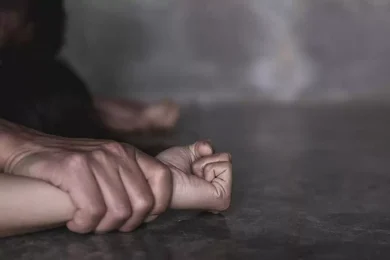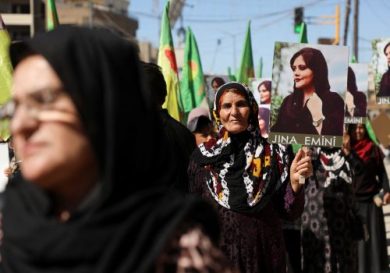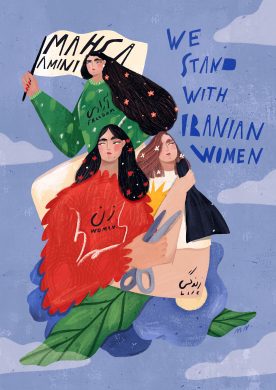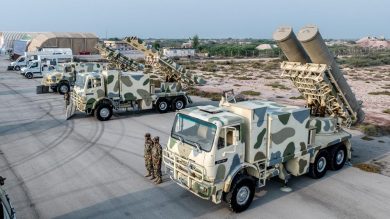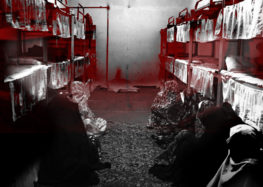The “Women, Life, Freedom” movement, sparked by the tragic death of Mahsa Amini in 2022, has become one of the most significant uprisings in Iran’s modern history. Women across the country have led this movement, openly defying the Islamic Revolutionary Guard Corps (IRGC) and its brutal enforcement of oppressive laws. Their fight for basic rights, bodily autonomy, and freedom from state violence has resonated globally, shining a spotlight on the systemic repression perpetrated by the IRGC. Despite facing mass arrests, torture, and executions, Iranian women continue to protest, challenging one of the world’s most repressive regimes with unparalleled courage. This article explores how Iranian women are leading the fight against the IRGC, the regime’s response, and the growing international support for their cause.
1. The Spark of the Movement: Mahsa Amini’s Death
A. The Incident
In September 2022, 22-year-old Mahsa Amini was arrested by Iran’s morality police for allegedly violating the country’s compulsory hijab laws. She died in custody under suspicious circumstances, with eyewitnesses and family members reporting that she was beaten and tortured.
B. Nationwide Protests
Amini’s death triggered nationwide protests, with women removing their hijabs, cutting their hair, and chanting “Women, Life, Freedom” in defiance of the regime. These protests quickly spread to universities, workplaces, and public spaces, becoming a symbol of resistance against the IRGC’s control.
2. The IRGC’s Role in Repression
The IRGC and its Basij militia are tasked with enforcing Iran’s strict Islamic laws and suppressing dissent. They have responded to the protests with brutal crackdowns, including:
A. Arrests and Detentions
• Thousands of protesters, including women, students, and children, have been arrested.
• Many detainees face torture, sexual violence, and forced confessions.
B. Violence Against Protesters
• IRGC forces have used live ammunition, tear gas, and beatings to disperse crowds.
• Reports indicate that hundreds of protesters have been killed since the demonstrations began.
C. Targeting Activists and Leaders
• Prominent women’s rights activists, journalists, and lawyers have been detained or placed under surveillance.
• The IRGC has carried out harassment and intimidation against the families of those killed in protests.
3. The Central Demands of the Movement
The “Women, Life, Freedom” movement is not limited to protests over hijab laws. It reflects broader demands for human rights, democracy, and gender equality. Key demands include:
A. End to Mandatory Hijab Laws
• Women in Iran have long resisted the forced hijab, a symbol of the regime’s control over their bodies and choices.
• Many protesters are calling for full autonomy over their dress and appearance.
B. Accountability for Human Rights Violations
• Protesters demand justice for victims of state violence, including Mahsa Amini and others killed by the IRGC.
• Calls for the prosecution of IRGC commanders responsible for abuses have gained traction.
C. Political Reform and Democracy
• Activists are increasingly calling for an end to authoritarian rule, demanding a democratic government that respects freedom of speech and assembly.
4. The Role of Women in Leading Resistance
A. Grassroots Leadership
Women have been at the forefront of organizing protests, forming underground networks to mobilize communities.
• High school and university students have played a crucial role, holding demonstrations on campuses despite violent crackdowns.
• Women from diverse backgrounds—teachers, healthcare workers, artists, and mothers—have united in solidarity.
B. Defying Social Control
In acts of defiance, women have:
• Publicly removed and burned their hijabs.
• Challenged morality police by refusing to comply with dress codes.
• Used art, poetry, and music to spread messages of resistance.
C. Digital Activism
Despite internet shutdowns and censorship, women have used social media to share footage of protests and abuses, gaining global attention.
5. International Support for Iranian Women
The global response to the “Women, Life, Freedom” movement has been overwhelmingly supportive, with activists, governments, and celebrities expressing solidarity.
A. Global Protests and Awareness Campaigns
• Iranian diaspora communities have organized demonstrations in major cities worldwide, including New York, London, Berlin, and Paris.
• International activists have amplified the movement through social media hashtags like #MahsaAmini and #WomenLifeFreedom.
B. Sanctions on the IRGC
• The United States, European Union, and United Kingdom have imposed sanctions on IRGC officials responsible for human rights abuses.
• Activists continue to push for the IRGC’s designation as a terrorist organization to further limit its resources.
C. Support from Human Rights Organizations
• Groups like Amnesty International and Human Rights Watch have documented violations committed by the IRGC, calling for international investigations.
• The United Nations has condemned the violence and urged Iran to respect human rights conventions.
6. Challenges Faced by the Movement
Despite widespread support, the movement faces significant challenges, including:
A. Severe Repression
• The IRGC’s violent tactics have intimidated many protesters, making sustained mobilization difficult.
• Fear of arrest, torture, and execution deters some from participating openly.
B. Censorship and Information Control
• The Iranian regime enforces internet blackouts, limiting communication and the spread of protest footage.
• State-controlled media spreads disinformation, blaming protests on foreign interference.
C. Lack of International Action
• While symbolic support has been strong, activists argue that concrete action, such as more targeted sanctions, is still lacking.
• Some governments prioritize nuclear negotiations with Iran over human rights issues, complicating diplomatic responses.
7. The Path Forward
A. Strengthening Global Solidarity
• Continued awareness campaigns and international protests are essential to maintain pressure on the Iranian regime.
• Global organizations must provide resources to protect and empower Iranian activists.
B. Expanding Sanctions and Accountability
• More nations should consider sanctions on IRGC leaders and support efforts to prosecute crimes against humanity.
• Activists urge UN member states to create independent inquiry mechanisms to investigate IRGC abuses.
C. Supporting Iranian Civil Society
• Providing digital security tools, funding for independent media, and safe havens for activists can help sustain the movement.
• Long-term support for women’s rights organizations in Iran will strengthen local resistance.
Conclusion
The “Women, Life, Freedom” movement is a historic turning point in the struggle for justice and equality in Iran. Women are leading the charge against IRGC repression, inspiring a global call for freedom and human rights. As the movement grows, international solidarity and concrete action remain crucial to supporting those risking their lives for a better future.
Join Our Newsletter!
Stay informed with the latest updates, news, and ways to take action in the fight for justice and global security. Sign up now to get updates delivered straight to your inbox!

